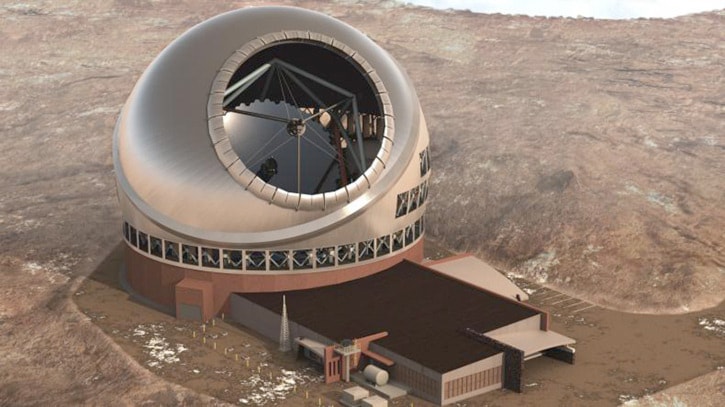An international project to build one of the world’s largest and most advanced telescopes has ties to the South Okanagan.
“The science behind this is amazing,” said Luc Simard, Thirty Meter Telescope instruments group  leader. “Canadians are part of this next generation of space exploration. It is like building a tall ship to explore the world but now we will explore the universe.”
leader. “Canadians are part of this next generation of space exploration. It is like building a tall ship to explore the world but now we will explore the universe.”
Employees at the White Lake Observatory, located just south of Penticton, and Victoria’s National Research Council have been working on the international project to build a Thirty Meter Telescope that will be constructed at the summit of Hawaii’s Mauna Kea volcano. It is a site hosting several international observatories due to its high altitude and dry climate. The telescope will allow astronomers to study subjects such as distant galaxies, supermassive black holes and the birth of the universe. It also enables star-by-star observation of galaxies located several million light years away.
The Canadian team, which includes work done at the White Lake Observatory, is responsible for the adaptive optic system and the dome. Simard said Canadian scientists are recognized world-wide for their expertise in that area. He explained the contribution to the Thirty Meter Telescope as assisting it to be the most powerful optical instrument on Earth. It will use a 30-metre diameter aperture to gather light in order to get detailed views of the universe, sharper than the Hubble Space telescope. When completed, the telescope will stand in an observatory 22-storeys tall and have approximately half the surface area of a National Hockey League rink.
Other partners include the United States, China, India and Japan who will be working on the structure inside the dome, software and the mirrors. This has meant building partnerships with teams working all over the world to put all the pieces together.
On Tuesday, Prime Minister Stephen Harper announced the Government of Canada’s intention to provide up to $234.5 million over 10 years to support participation in building the telescope. Overall the project is expected to cost $1.5 billion U.S.
A total of $30 million was previously provided from Canadian sources over multiple years to support pre-construction activities, mainly by the National Research Council and the Canada Foundation for Innovation.
The support secures a viewing share for Canadian researchers at the Thirty Meter Telescope once it is operational in 2023-2024.
“I have given a lot of talks to high school students ... I talk about the telescope and the potential to detect life in the universe. They are the ones going to be making those discoveries,” said Simard. “There are a lot of opportunities for not just future astronomers but engineers and all kinds of people needed to make this complex machine work. I hope this inspires the next generation of Canadians in science.”
The telescope hasn’t been without controversy. According to the Hawaii Tribune Herald, protestors consider Mauna Kea site a sacred mountain. Arrests of 31 people happened last week.
The media outlet said construction halted during a festival held this week and a spokesperson for the project said the work schedule is being assessed on a day-to-day basis.
